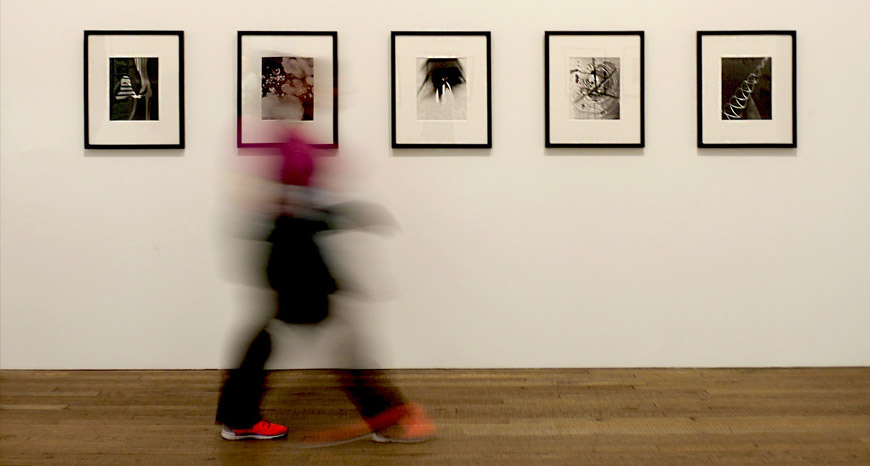Since the early 2000s, the art market has been expanding rapidly. The number of fine art investments is constantly increasing and the price of artworks has risen by approximately 90% in less than 20 years! More and more investment funds, financial agents and art enthusiasts are paying very close attention to this growing market. Why invest in art? The following article will increase your knowledge of the art market and how investing in it could help you build long-term wealth.
Why invest in art?
It is a potentially lucrative investment alternative!
Up to 10% in returns
Artprice, the world leader in art market information, recently released data that shows that investing in the art market can be just as efficient at growing your wealth as trading on major stock exchanges with less financial risk.
When purchasing and reselling a piece of art, you can expect an annual return of more than 10% for paintings, sculptures or photographs whose value exceeds €100,000. This newly collected data is sure to please the ever-increasing number of individuals looking to invest in art.
The art market’s increasing accessibility and skyrocketing values
Why investing in art is becoming more common
Art lovers around the world now have increasing opportunities to invest in art that will not only enrich the quality of their lives but also their financial portfolio.
Professional investors have the necessary resources to make large-scale financial transactions when they invest in art but the art market is becoming increasing accessible to individuals in a variety of wealth brackets who are looking to their wealth managers for help with investing in art.
With the advent of the Internet and social networks, information flows freely and access to art market data - which was once reserved for experts and wealthy individuals - is no longer a problem. Now, investing in art can be as simple as viewing a few portfolios and clicking through to a new purchase!
Artwork values are steadily increasing
Why not invest in art from the comfort of your own home with your computer? Today, there are magnificent pieces by professional artists available at nearly every price point. The Internet provides a never-ending wealth of information about artwork, galleries and artists. A great place to start is right here with Artalistic!
In addition, art is becoming increasingly popular with investors because of its high long-term profitability. Art is considered to be an investment that will increase in value over the years. For example, a painting that is acquired and kept for more than 5 years will increase in value by 7 to 12% every year!
With a little experience, it is possible to spot the next Jackson Pollock by following their work carefully and making an investment. Anticipating the best time to sell the piece is key. You don’t need a degree in art history or fine art to learn how to invest in art!
The financial side of art investing
Expand your portfolio’s horizons by investing in artwork
Purchasing a piece of art can be both visually and fiscally attractive as well as a risk-free financial alternative. Investors are increasingly looking toward the art market for ways to diversify their portfolio.
Why invest in art rather than the stock market?
Financial specialists are constantly faced with the risk of a drop in returns of many products traded on the stock market, investing in fine art is a very attractive alternative for capital gains and diversification of assets.
The art market is completely separate from the financial markets and is not affected by stock market crashes. The value of a work of art is indexed on the reputation of the artist and their work and not on the fluctuations of the Dow Jones! This is why investing in art is much less risky than purchasing stock in gold or coal.
Attractive taxation
Fine art is exempt from the French solidarity tax on wealth
Investing in art also has another advantage. For example, in France, works of art are totally exempt from the solidarity tax on wealth (ISF). Moreover, the levies applied during a resale are not exorbitant. This is a strong argument that motivates many investors to invest in fine art.
Taxes on the resale of a piece of art
In France, the taxation of capital gains incurred during private transactions of works of art is governed by two rules: either the flat-rate tax for art or the regime of capital gains for art.
If you invest in art, you can receive a tax deduction depending on which taxation method you select, however keep in mind the following:
- No tax is imposed when a piece of art whose price does not exceed €5,000 exchanges hands on the market
- When a piece is sold for more than €5,000 in the European Union, the transfer is automatically subject to a flat tax of 6.5% calculated on the sale price
- The transferor may opt for the regime of capital gains; this tax currently varies on average from 34 to 36% of the capital gain (and not of the sale price). Half of this tax goes to income tax and the other half goes to social security contributions.
If you wish to sell or buy a work of art, feel free to browse Artalistic’s website. Our team of specialists will help you explore a wide array of paintings, drawings, photographs, sculptures and limited editions by established and emerging artists. We also guarantee the satisfaction of a completely transparent transaction process. Enjoy your visit on Artalistic and see you soon for the latest news about the art market.
 English
English Français
Français


You must be logged in to post a comment.
Click here to log in